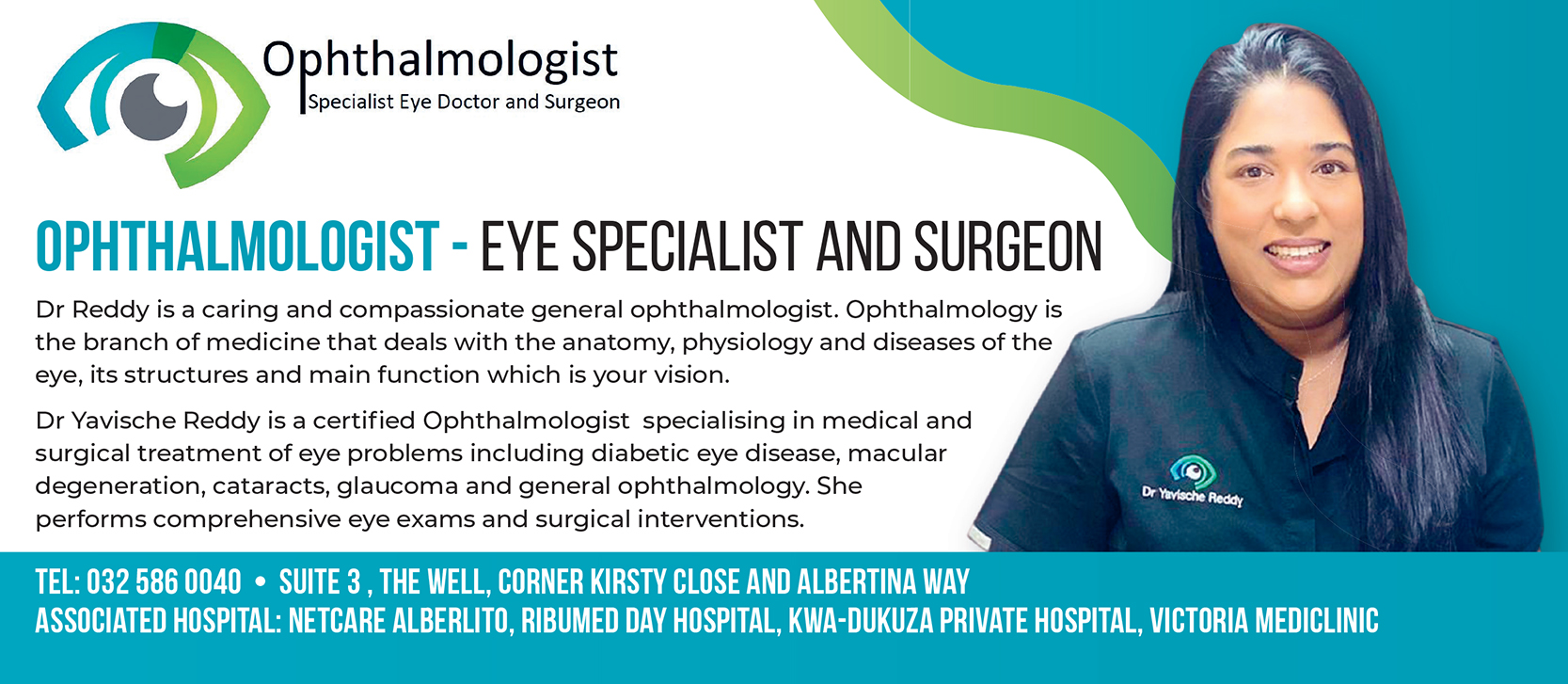Good eye care is essential during childhood. Dr Y Reddy, a Ballito-based ophthalmologist, explains why.
Many visual problems develop while the eyes are growing, and this often affects a child’s future development and vision. The pathways between the eye and brain continue to develop from birth to eight years of age. If left untreated, eye problems that result in poor vision can prevent these pathways from developing and will result in decreased vison for the child for the rest of their lives.
WHAT ARE THE MOST COMMON CHILDHOOD CONDITIONS?
The most common conditions that affect eyesight during childhood include:
• Developmental disorders, which can be diagnosed shortly after birth or within the first year of life
• Refractive/optical problems such as short sightedness, long sightedness, astigmatism
• Short sightedness (myopia) is becoming more common in children and young people and over the past few years new treatments have become available to slow down this condition
• Amblyopia (commonly known as the lazy eye)
• Strabismus, a disorder in which both eyes don’t line up in the same direction
• Inflammation on the surface or inside the eye, including allergic eye disease
• Infections of the conjunctiva, the transparent membrane that covers the white part of the eye and the inside of the eyelids
• Eyelid lesions
WHAT ARE THE SYMPTOMS OF EYE PROBLEMS?
Some possible symptoms of eye problems include:
• Blurred or double vision
• Crossed eyes, squint eyes, eyes that turn in or out and don’t focus, tilting of the head
• Red or swollen eyes
• Eyes that are sensitive to light
• Eyes that bulge
• Excessive tearing from the eyes
• Lots of eye rubbing
• Seeing a white reflection in your child’s eyes
• Trouble reading and holds things close, avoids close up tasks
• Eyes that “shake”
• Droopy eyelids

It’s important to understand that a child’s learning and academic performance can be affected by undiagnosed and untreated vision problems. Eye conditions can also affect children’s quality of life by limiting their ability to take part in age-appropriate activities.
All children should have a basic eye check at birth to make sure there is no developmental defect. Most children should then have a basic vision check again when they are four or five years old as part of their school vision screening programme.
- Advertisement -


